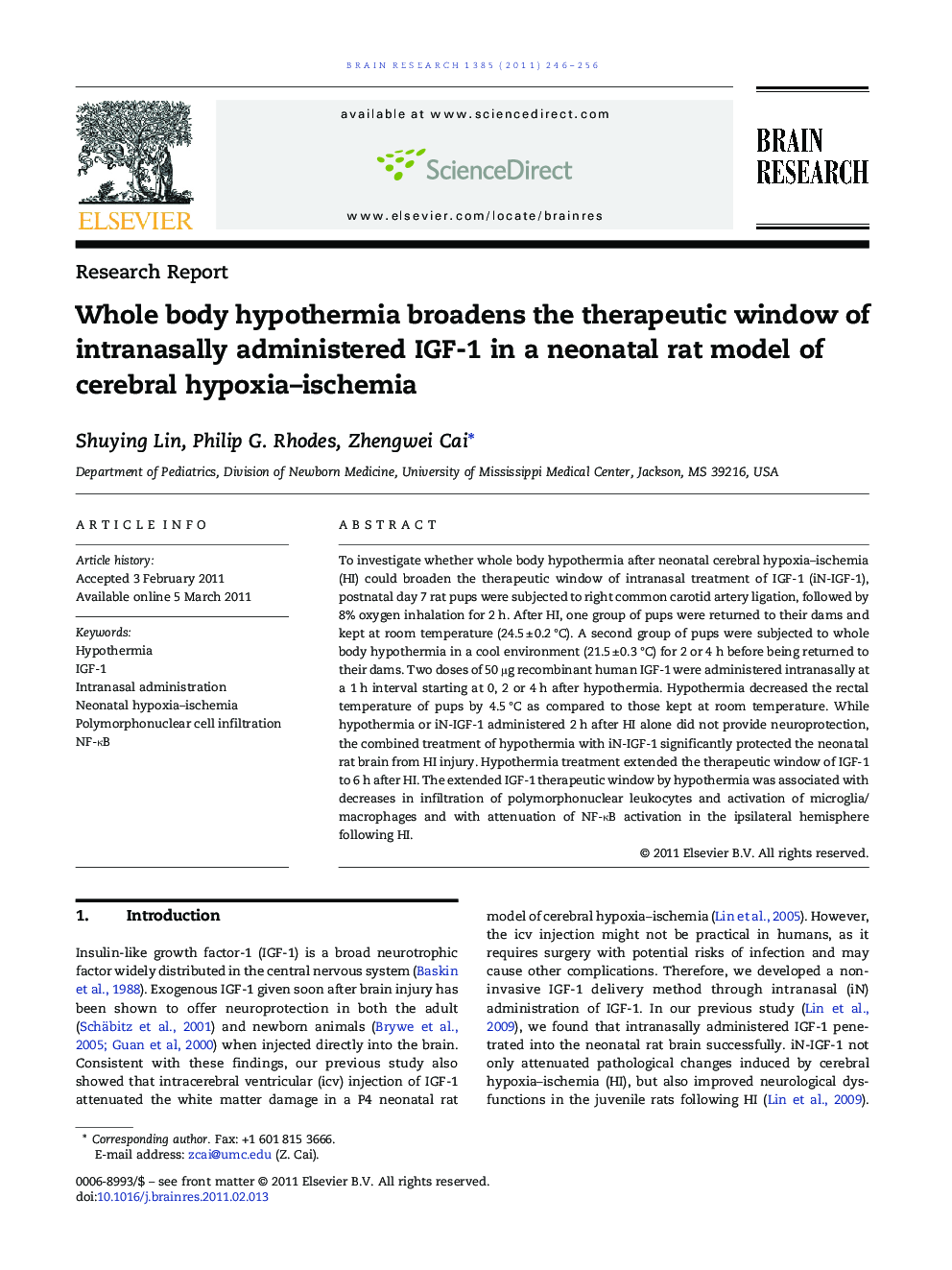| Article ID | Journal | Published Year | Pages | File Type |
|---|---|---|---|---|
| 6264988 | Brain Research | 2011 | 11 Pages |
To investigate whether whole body hypothermia after neonatal cerebral hypoxia-ischemia (HI) could broaden the therapeutic window of intranasal treatment of IGF-1 (iN-IGF-1), postnatal day 7 rat pups were subjected to right common carotid artery ligation, followed by 8% oxygen inhalation for 2 h. After HI, one group of pups were returned to their dams and kept at room temperature (24.5 ± 0.2 °C). A second group of pups were subjected to whole body hypothermia in a cool environment (21.5 ± 0.3 °C) for 2 or 4 h before being returned to their dams. Two doses of 50 μg recombinant human IGF-1 were administered intranasally at a 1 h interval starting at 0, 2 or 4 h after hypothermia. Hypothermia decreased the rectal temperature of pups by 4.5 °C as compared to those kept at room temperature. While hypothermia or iN-IGF-1 administered 2 h after HI alone did not provide neuroprotection, the combined treatment of hypothermia with iN-IGF-1 significantly protected the neonatal rat brain from HI injury. Hypothermia treatment extended the therapeutic window of IGF-1 to 6 h after HI. The extended IGF-1 therapeutic window by hypothermia was associated with decreases in infiltration of polymorphonuclear leukocytes and activation of microglia/macrophages and with attenuation of NF-κB activation in the ipsilateral hemisphere following HI.
Research highlights⺠Hypothermia broadens the therapeutic window of IGF-1 after neonatal brain hypoxia-ischemia. ⺠Hypothermia reduces the infiltration of PMNs in the infarcted brain. ⺠Hypothermia reduces the activation of macrophage/microglia in the infarcted area. ⺠Hypothermia in combination with IGF-1 treatment inhibits activation of NF-κB at the early stage of brain recovery. ⺠Hypothermia in combination with IGF-1 increased phosphorylation of Akt.
